Triclops Studio founders Rob Ames and Luc Hudson talk lockdown, sizzles and the art of the online pitch
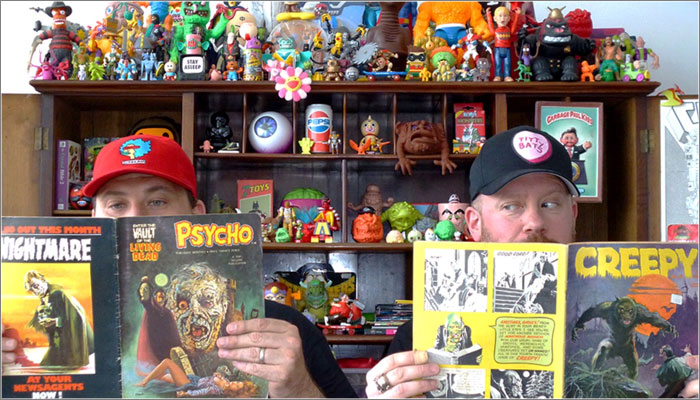
Former Hasbro designers Rob Ames and Luc Hudson are the straight-talking, mind-boggling founders of UK agency Triclops. Here they talk about sizzles, life in lockdown… And pitching online!
Hello fellas, how are you? Always a pleasure! How’s lockdown treating you?
Luc: We’re getting a bit bored with the Groundhog Day theme, I think. We’re used to feeding our brains in the real world so being limited to online resources is tough – but we’re very lucky to be able to continue doing what we do, given that lots of people can’t at the moment!
Rob: In a weird way, though, we’re kind of getting used to it. It’s been three months so we’ve adapted. We’re sort of semi-locked down even in our usual workplace as it’s just the two of us. I don’t have to wear trousers every day is the only real change.
Luc: I’m grateful I don’t have to see that.
Another side effect that’s underreported! Professionally speaking, how do you like to be introduced? For what do you like to be known?
Luc: We have a standard snapshot with which we tend to introduce ourselves to everyone, in a nutshell it’s something like “We met at Hasbro a long time ago and ran away together to work for everyone. We’re all about the ideas, whether you hire us as a consultancy to work on concepts and IP, or you buy our inventions direct.”
Rob: It’s a constant struggle for us to get a better balance between live work – which pays the bills right now – and finding the time to invent good stuff which could pay the bills in 12-18 months’ time! When clients come to us with a theme or license, we present back to them the potential in it for toy product. We basically squeeze the juice out of briefs for clients – that sounds a bit wrong!
Yes, you’ve painted a nauseating image there! When you say you present it back to clients, that’s something I don’t think we’ve discussed before. How do you guys go about presenting or pitching ideas?
Rob: Ideas should sell themselves to an extent. Obviously we have to introduce them, but we always try to come up with easy-gets. Sometimes we’re working with a particular client in mind but some ideas pop up and feel like they could fly with anyone.
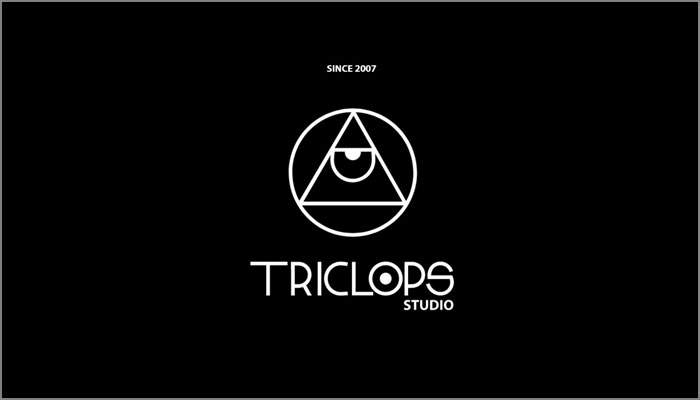
Notwithstanding lockdown, you prefer to pitch face-to-face, presumably?
Luc: Face-to-face is always preferable if possible. We pitch via a combination of face-to-face, teleconference and email. For your protection, as well as that of the potential partner, it’s always important to have a paper trail of what you showed to whom, and when.
Rob: We try to be ninja-like; in and out. I’m not sure I’d make a very good ninja though, you’d see me coming a mile off! If you have three seconds to grab someone’s attention with a CV, it’s a similar thing with presenting ideas. These guys may be seeing hundreds of ideas a day so you don’t want a lengthy build: you want to get a wow within 30 seconds ideally… Unless your concept is all about anticipation!
Oddly enough, I discussed this with Bill, recently… When you’re recognisable in the industry, does that help? Is there less need to break the ice?
Luc: We’re lucky to have a good network in place from our consultancy which specialises in Concept Design – though that includes a lot of trend hunting and market research as foundations. Sometimes this works against us, though! In the past, some clients struggled to accept us with the split identities of both work for hire and inventors… We always say that we technically invent full time, it’s just the methods of payment are different!
Oh! There’s a pigeonhole? I hadn’t thought about it that way round…
Rob: It’s important to establish where your idea has come from and what the inspiration is behind it. Nothing is really new in Toyland – or at least very little is – but we want to show a fresh, quirky twist on what we already know.
It’s also about communicating your passion for toys. When showing where the idea’s come from, you’re also expressing passion and knowledge and experience…
You want to show your excitement at this idea too, if you appear to be just going through the motions, nobody else is going to be excited about your concept. It’s also important to be aware of what’s on-trend, and what properties or licenses the client has so that your invention fits with their business.
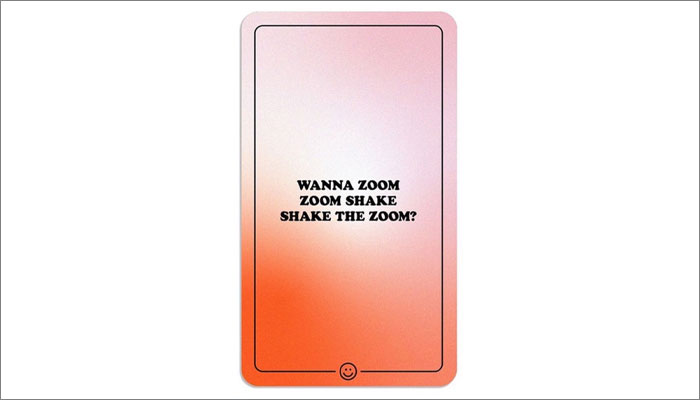
Very good! So really – while it is about the idea, it’s also about your credibility, the market place and what the company needs. And out of interest, then, where do you stand on sizzle videos?
Luc: It’s definitely advisable to create a sizzle video! A picture speaks a thousand words and videos are however many pictures per second so you can just sit back and let the sizzle do the talking! It depends on the client though… Some companies are happy to see concepts in 2D at an early stage. It also depends on the idea… If it’s a physical transformation, you might need several illustrations to convey the gimmick whereas if you have a prototype, it’s maybe five seconds and an easy yes or no from whoever you’re showing it to.
Rob: If it’s easier to show it than to draw it, that’s what we do. We’re lucky enough to be able to kit-bash models ourselves if we don’t get a professional model maker to do it. It also comes down to finances and how much money you want to spend on getting the idea ready to show… It might take longer to build a prototype and video it than to create a 2D presentation of the idea.
For many clients, a sizzle video has become the preferred way to share an idea because it needs less explanation, and they can easily pass it on. In any case, it should be short and sweet – it goes back to that point about ideas selling themselves.
I’m curious on that point: what signs do you look for that something is going down well? Or going badly?
Luc: You can generally gauge the reaction in the room. Via teleconferencing, it’s more difficult to judge. Teleconferencing is a fascinating product of the world we currently inhabit… It’s less satisfying than a physical meeting, partly because the subtleties are lost. You don’t usually stare into the eyes of more than one person at once in the real world! That said, we’re very lucky to have the two of us. That means one of us – usually Rob – does the talking while the other observes. We debrief after meetings…
And squeeze the juice out of them?!
Luc: And squeeze the juice out of them, yes! It’s interesting; what one of us picks up on that the other misses. You can usually tell when an idea’s going down well, though: poker faces go out of the window a bit when you present a winner. It’s always tricky to know what will come of the presentation because you’re generally presenting to a gatekeeper, or first port of call, who then has to report back to the wider team.
Rob: And I think you know if something’s going really well when the speed of the pitch is really swift… If there are no questions and “It’s great” is the main feedback, it’s a great indicator as to how well a pitch is going. The person you’re presenting to has a certain number of tick boxes for taking in an idea so if their head is going, “Tick, tick, tick, tick…” your work is done!
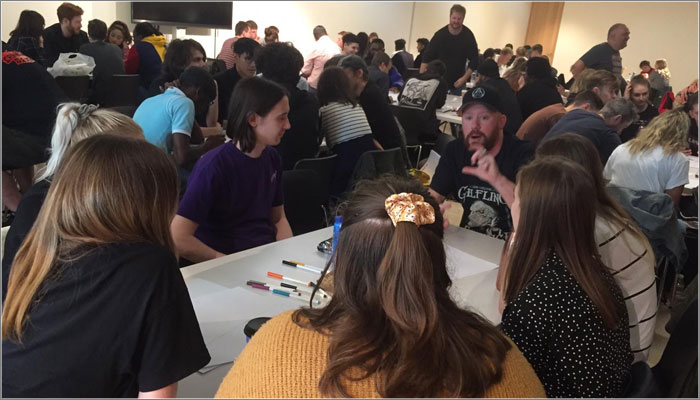
And the opposite? A blanket of silence covers the room?
Rob: Oh, silence is a good indicator you should perhaps move on… Or they’ll tell you outright: “Yeah, we’ve seen an idea a bit like this before”! That’s your cue to keep the momentum going and just move on to the next one.
How often are you in a meeting with the feeling in your gut, “We just haven’t clicked. This was a bust from the minute we walked in!”?
Luc: The meeting is just a step on the way… It’s difficult because ideas are so subjective so you’re sometimes hoping to convey the equivalent of just how great “Rotten Maggot Face Racers” are to someone who’s easily grossed out and not interested in cars…
“Rotten Maggot Face Racers…” I absolutely want to see you pitch that!
Luc: Well, this is the problem! We’ve had times when we think we wasted our time only to hear that the clients would like to go ahead with one or more concepts. But it’s not worth persisting with your pitch if you get the sense that the client really isn’t that interested… Move onto something else and hope to pique their interest with the next one.
Rob: If you’re not projecting passion and commitment onto what you’re showing, though – even if it’s not tailored to a wishlist – you’re going to fall flat from the get go. It’s all about selling somebody something, and it’s easier to sell something fresh and a bit different than hawking the same old stuff. A fresh twist is what re-energises a formula. You’ve got to be pumped about showing your stuff, or the person on the other side of the table isn’t going to be pumped either. There’s nothing worse than regurgitating the same old ideas, this is also a snore-off for the person the other side of the table because they’ve seen it all before. We strive to continuously push things forward.
Luc: Although I guess being in the right place at the right time is also crucial to selling ideas, and that might not be the first time you show it.
Rob: Yes; it might be related to a license the client’s just acquired, so it now works perfectly where last year it maybe wasn’t relevant; it didn’t hook them.
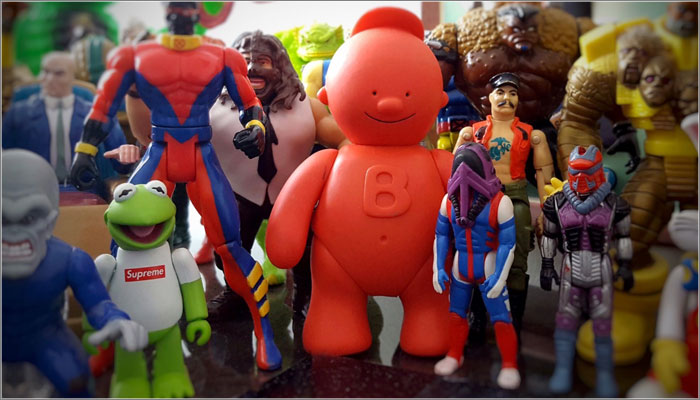
Luc, you said earlier that – with teleconferencing – it’s more difficult to judge how things are going. So with this year’s Mojo Nation event going virtual, what challenges have you discovered about pitching remotely?
Luc: We’re lucky that a lot of our clients are not UK-based so teleconferencing is a natural part of working together for us. Pitching concepts remotely isn’t ideal, but the limitations can be worked around… This is where videos come in very useful and screen-sharing!
Rob: Surely every event is going to be going virtual over the next six to twelve months at least? There’s going to be a lot of trial and error but ultimately it’s about getting into a presenting groove that works specifically for video-conferencing. It’s hard though because conversation is one at a time – so with three or four people in the pitch it’s all going to take a lot longer. Will you ultimately walk out of there with an indication of how it’s gone? Just the fact that everyone’s Wi-Fi is a bit crap is also a bit of a concern, the technological implications…
Yes! I’ve found people are losing a bit of confidence in using humour because of that… That slight delay between the moment someone cracks a joke, and the person the other end laughing can feel like a lifetime!
Rob: And all that holding something up to the camera and saying “Can you see that? What about now?”! That’s not as slick as the real world! It’s about atmosphere as well… When you walk into a room and talk to people, you’re creating an atmosphere. If you’re pitching remotely, how do you create an atmosphere?
Yes… It feels like you have to slow it down a bit and plan more. Okay, so with that in mind, if you had to give people three pieces of advice about selling ideas in general, what would they be?
Luc: First, do your homework. Make sure the idea doesn’t already exist, and make sure the company you’re showing it to makes the kind of product you’re showing. Second, keep it short and sweet. Invention hubs see hundreds, if not thousands of submissions! Your idea needs to have immediate impact and an easy “get”…
And third, fit the template. Design around the kinds of products that are already on shelf with regard to scale and price point. The market is a great big competition so your product needs to appear to be great value for money without costing the manufacturer an arm and a leg to produce.
Excellent! And would you say the same three things, Rob? Or is the advantage of the double interview that we actually get six tips?!
Rob: I’ll add three more! First, don’t regurgitate… You have to inject something new, something that’s going to push the idea forward. Second, it’s back to that point about confidence: if you don’t believe in it, nobody else will. And third: filter… Make sure that you really pick the ideas apart and check that they’re as good as you think. Build a prototype and play with it. That might lead to an evolution that’s better than the original idea.
And what’s the worst thing you think someone could do in a pitch?
Luc: Fart?
Rob: Shart! Falling asleep? Or, falling asleep and then sharting!
And squeezing juice out of the briefs… Okay. I’m actually happy with that! So let me ask you… If you were going to write your autobiographies, what would they be called?
Luc: Leftfield – because I’m left-handed and I grew up in a field.
Rob: I have no idea.
Luc: That’s what yours should be called!
Well, we don’t have to decide now! Let’s wrap it up then… As always, it’s a pleasure to catch up. I particularly appreciate your thoughts on online pitches… I know a lot of people are mistrustful of it. Finally, then, what’s the most interesting thing on your desks, or in your offices?
Luc: We’re sorely missing being in our studio because it’s stuffed full of toys which act as a kind of reference library for our ideation. We’re trying to get used to brainstorming in our respective homes rather than sitting in the studio together and plucking relevant toy samples off our shelves at work. My current set-up is in the kitchen though because my partner bagsied the study for his teleconferencing… So the most interesting thing is probably the fridge.
The fridge?!
Luc: Yes! The desk’s currently doubling as a workshop as we’re developing a batch of inventor ideas… There are several bastardised toys, elastic bands, milk bottle caps and bits of wire strewn around.
Rob: I’m missing Clops HQ too… My desk probably has more toys than The Entertainer! My current set up is on the dining-room table surrounded by cacti and Aloe Vera plants and spider plants which is nice, a bit of the outdoors indoors! I also have two Nike shoeboxes on a bench… One is full of toys associated with studio & inventor projects we’re working on right now. The other contains my Dremel, sandpaper, files, saws – basically a mobile workshop! Most important thing is music, though, whether through smartspeakers, my PC or via my decks which are conveniently within arm’s reach of my temporary desk!
Brilliant! Fellas, thanks again for your time. I hope we get to see each other again soon.
—-
To stay in the loop with the latest news, interviews and features from the world of toy and game design, sign up to our weekly newsletter here






















